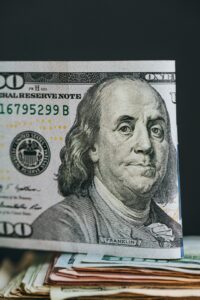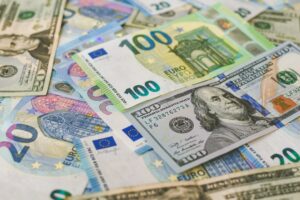Exploring the Impact of Historical Forex Rates on International Trade and Investment
The foreign exchange market, commonly known as forex, is a decentralized global market where currencies are traded. It plays a pivotal role in facilitating international trade and investment by allowing businesses and individuals to exchange one currency for another. The value of one currency relative to another is influenced by various factors, including historical forex rates.
Historical forex rates refer to the past exchange rates between two currencies. These rates are recorded and can be analyzed to understand the trends and patterns in currency valuation over time. Examining historical forex rates is crucial for understanding the impact of exchange rate fluctuations on international trade and investment.
One of the main impacts of historical forex rates on international trade is the effect on export and import competitiveness. When a country’s currency depreciates relative to its trading partners, its exports become cheaper for foreign buyers. This can lead to an increase in demand for the country’s goods and services, boosting its export industry. On the other hand, a stronger currency can make a country’s exports more expensive, potentially reducing its competitiveness in the global market.
For example, let’s consider the historical forex rates between the US dollar (USD) and the euro (EUR) over the past decade. In 2010, 1 USD was equivalent to approximately 0.75 EUR. However, by 2020, the exchange rate had shifted to 1 USD being equivalent to 0.90 EUR. This depreciation of the USD relative to the EUR made American goods and services more affordable for European consumers, potentially leading to an increase in US exports to the Eurozone.
Apart from trade, historical forex rates also impact international investment decisions. Investors consider exchange rate movements when deciding to invest in a foreign country. A favorable exchange rate can increase the return on investment, while an unfavorable exchange rate can reduce it. Historical forex rates provide insights into the volatility and stability of a currency, which helps investors assess the risks associated with investing in a particular country.
Additionally, historical forex rates influence the profitability of multinational corporations (MNCs) with operations across different countries. MNCs often have subsidiaries or branches in various countries, and they need to convert their profits back to their home currency. Fluctuations in exchange rates can have a significant impact on their earnings. For instance, if a US-based MNC has a subsidiary in Japan and the Japanese yen (JPY) appreciates against the USD, the MNC’s profits in JPY will be worth less when converted back to USD.
To mitigate the risks associated with exchange rate fluctuations, businesses and investors often engage in hedging strategies. Hedging involves taking positions in the forex market that offset the potential losses from adverse currency movements. Historical forex rates play a crucial role in determining the effectiveness of hedging strategies. By analyzing past exchange rate movements, businesses and investors can make informed decisions about the most suitable hedging instruments to protect their finances.
Moreover, historical forex rates provide valuable insights for policymakers and central banks. Central banks often intervene in the forex market to stabilize their currency or influence economic conditions. By analyzing historical forex rates, policymakers can assess the effectiveness of past interventions and develop strategies to manage exchange rate volatility. They can also use historical data to identify trends and patterns that may impact their country’s trade balance or inflation rates.
In conclusion, historical forex rates have a profound impact on international trade and investment. They influence export and import competitiveness, affect investment decisions, impact the profitability of multinational corporations, and guide policymakers in managing exchange rate volatility. Understanding and analyzing historical forex rates is crucial for businesses, investors, and policymakers to navigate the complexities of the global economy and make informed decisions regarding trade and investment.





